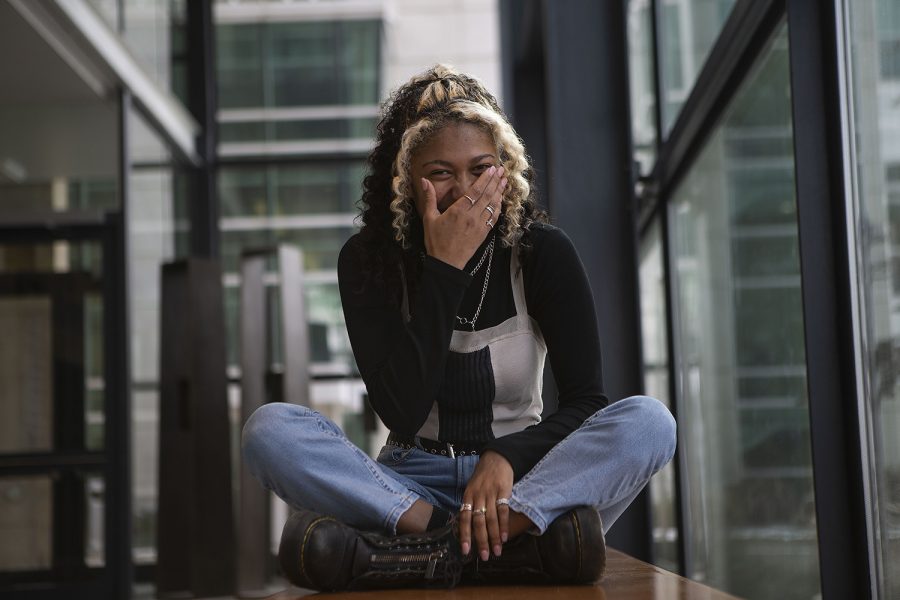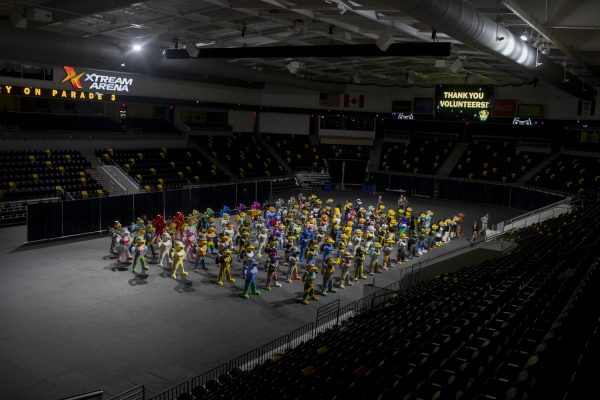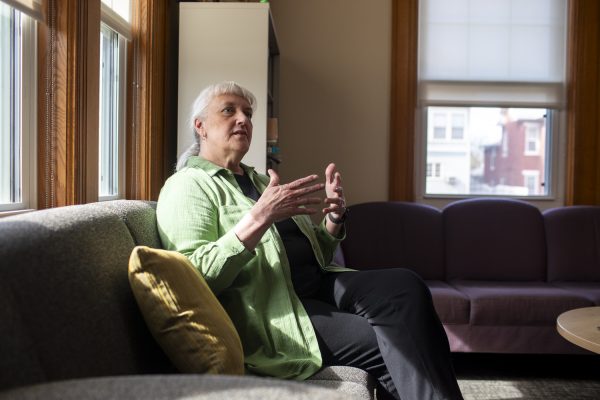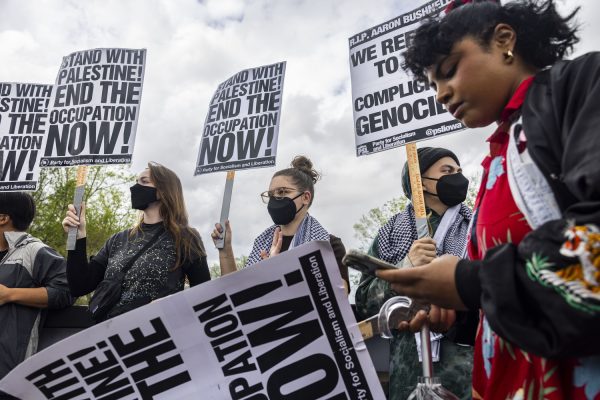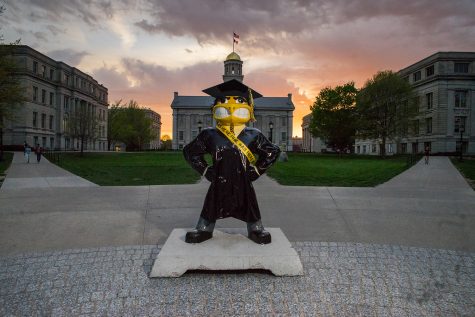UI students shop secondhand to bring sustainability to the clothing industry
The clothing and textiles industry continues to contribute vast amounts of waste to the environment through fast fashion and hyper consumption. However, a growing popularity for vintage and secondhand shopping among students could lead to more sustainable in the industry.
University of Iowa junior Jiselle Ramos laughs as she poses for a portrait in the Blank Honors Center on Thursday, Nov. 14, 2019. Ramos shops mainly at thrift stores because it is cheaper, more environmentally friendly, and fun.
November 18, 2019
Despite fast fashion’s popularity on a macro scale, a growing number of shop owners — and their patrons — in Iowa City are choosing to purchase clothing and household goods secondhand in an effort to reduce the waste of these industries.
Iowa State University Department of Apparel Professor Elena Karpova said clothing consumption has increased dramatically in the last 10 to 20 years, and the textile industry is undeniably one the most polluting industries, second only to oil. Since at least 1980, clothing prices have steadily decreased, she said, leading to higher consumption and lower quality.
A report from the Environmental Protection Agency indicates that 16.9 million tons of textiles were produced in 2017, and landfills received 11.2 million tons of municipal solid waste textiles that same year.
Though this rise in fast fashion and cheap clothing has created hyper-consumption and more waste, there are ways to mitigate this, Karpova said. Secondhand shopping and “thrifting” have increased in popularity, which Karpova hopes will make an impact for the future.
“I am hoping, and there is some sign that there will be a big change in the industry … it is just a matter of time,” Karpova said. “It is the same question as with climate change … sooner or later, we need to do something.”
With numerous secondhand locations in downtown Iowa City, many students participate as sustainable consumers.
In an email to The Daily Iowan, Cortnie Widen, the owner of White Rabbit in Iowa City, said that the store’s vintage selection draws in a considerable audience from Iowa City residents. White Rabbit works with a small number of vintage pickers to obtain their unique selection, she said, which draws in a consistent group of customers.
With large business and fast fashion producers such as Target coming to Iowa City in the near future, a concern for secondhand shopping’s prominence is relevant. However, Widen said that White Rabbit will still have many customers seeking their vintage options.
“There are still many people interested in shopping local and shopping vintage. White Rabbit offers something so different than any of our competitors,” Widen said.

University of Iowa junior Jiselle Ramos poses for a portrait, showing off her rings in the Blank Honors Center on Thursday, Nov. 14, 2019. “These are my rings that I wear every single day, and when I don’t have them on I’m like, ‘Oh my gosh, something wrong is going to happen today.’” Ramos received most of her rings as gifts, but some of them are store-bought.
UI third-year student Jiselle Ramos said she began secondhand shopping in her junior year of high school. After a Savers opened in her town of Crystal Lake, Illinois, Ramos said that she and some of her friends began to shop secondhand.
Ramos said she wasn’t very knowledgeable of environmental sustainability and began shopping secondhand for the uniqueness of clothing and low prices. However, as she began school at the UI, Ramos said secondhand shopping became more of a conscious effort to be a sustainable consumer by not participating in fast fashion.
“Since I came to the University of Iowa, I’ve really gotten into thrifting because of the good luck that I’ve had … when you find a good piece it makes you want to keep going back,” she said.
Goodwill, Salvation Army, Savers, Revival, White Rabbit, and Vice are among some of Ramos’ favorite secondhand locations in Iowa City.
“They’re local, and I know it’s not going to some big corporation out of greed,” she said.
Producers of fast fashion for companies big and small and their use of sweatshops and cheap labor is also a reason that she chooses to shop secondhand, Ramos said. The idea of supporting a brand that mistreats and underpays its workers is something she does not support, Ramos said, and led her to thrifting and shopping secondhand.
RELATED: Faculty and companies collaborate over sustainability
“Sometimes I have friends that will say ‘Oh, you’re so trendy,’ and I don’t take that as a compliment,” Ramos said. “I don’t really like that because, when you think of trendy, you do think of like fast fashion and what’s ‘in’ now.”
Ramos said that she does not find fast fashion to be tasteful. She also said that there is really no reason that fast fashion is more convenient than secondhand shopping because both can be cheap, although fast fashion is clearly made from lower-quality materials.
“I feel like a lot of people do fast fashion because it’s inexpensive, and I don’t like that argument because you can easily go to any thrift shop and pay the same amount,” she said. “And a lot of the time you’re going to get something that’s better quality, honestly.”



